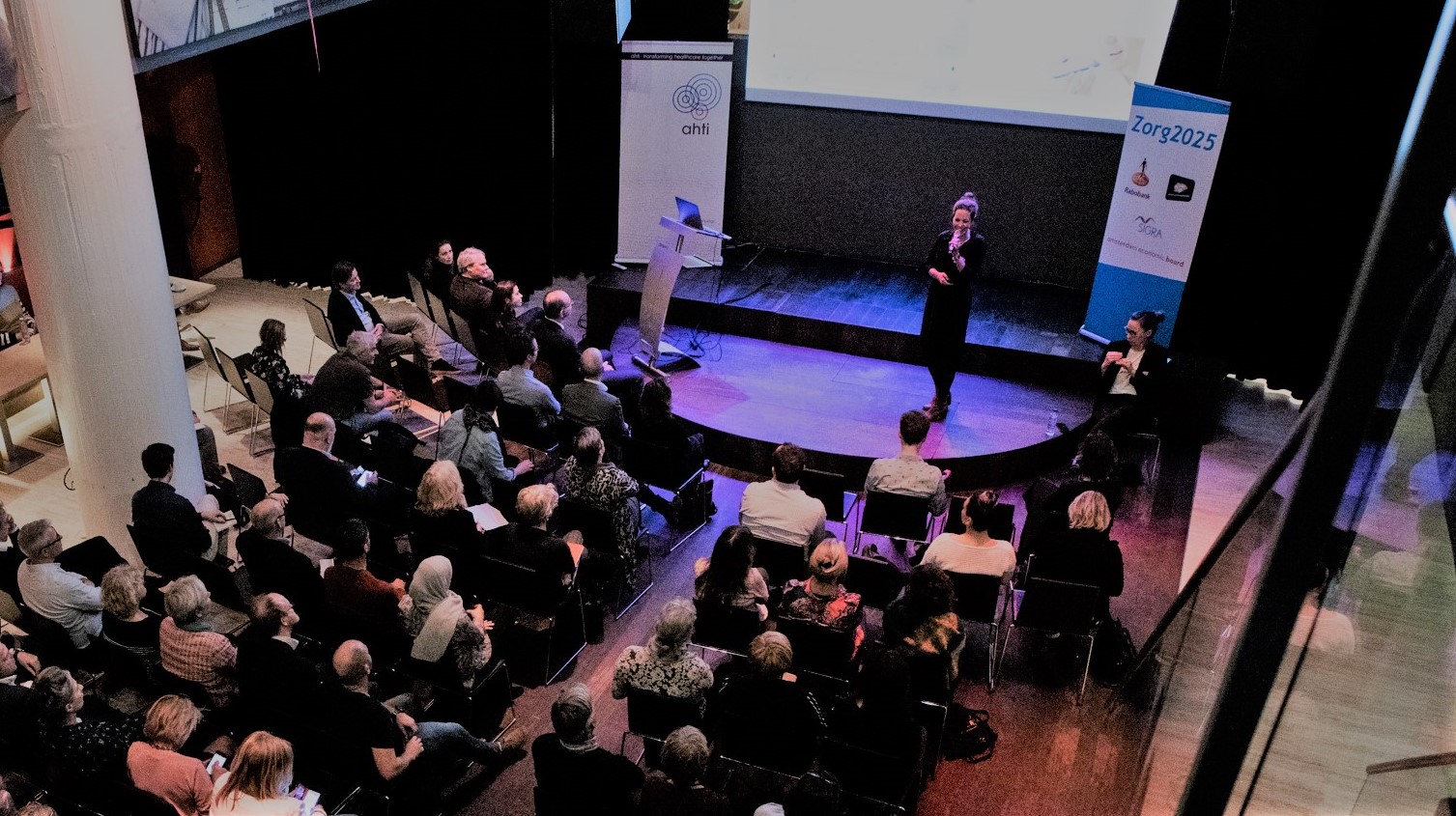
The Zorg2025 online gathering ‘AI: social and personal?’ explored the real-people side of artificial intelligence. While it’s clear that increasing social interaction between machines and patients is already working to lighten the workloads of healthcare workers and improving outcomes, the process remains complicated – just like people…
Improving care with fewer people
Together with Smart Health Amsterdam, Amsterdam Economic Board, the Rabobank and SIGRA, ahti organises the quarterly Zorg2025 – ‘Healthcare2025’ – meetup to streamline communications between clinical professionals, entrepreneurs, investors, researchers and knowledge institutions about the latest innovations in health and healthcare.
Almost 100 participants attended the first fully digital edition on 12 November 2020. Speakers discussed a dual problem: the healthcare demands of an increasingly ageing population, paired with the chronic shortage of healthcare workers.
But can technology increase social interaction between humans and machines? Short answer: yes. But a lot of work still needs to be done.
Better data leads to better algorithms
Mark Hoogendoorn is a professor of artificial intelligence at Vrije Universiteit Amsterdam (VU). He lists off AI’s many sub-domains that must synch up before machines can “function appropriately” at the bedside – such as natural language processing, robotics and machine learning. The latter domain is coming of age thanks to increased access to quality data, which leads to better functioning algorithms which in turn create more quality data.
“We’re seeing acceleration across the board as healthcare data currently grows at almost 50% annually,” says Hoogendoorn. And with its strength in finding buried patterns, machine learning is being actively applied for early diagnosis – leading to earlier treatment. “It helps when it’s a clear job like with radiology: recognising anomalies,” says Hoogendoorn. “Or finding the strategies used by doctors that resulted in the best outcomes.”
In short, Hoogendoorn sees AI as a gamechanger for healthcare. “But it’s still very limited at the bedside. For that to happen, a lot of innovation must still happen”.
Closer interaction between humans and machines
Koen Hindriks is professor of artificial intelligence at the Social AI group at VU, and CIO of the spin-off Interactive Robotics that seeks to create smarter and warmer machines.
Hindriks has already come quite a way with an incredibly cute humanoid robot called Pepper, which is currently being tested on its ability to directly interact with patients. “We need to understand what is behind our own human social psychology and interaction,” says Hindriks.
So, what do humans do? We recognise activities, emotions, faces, movements, gestures, voices and other people. We absorb and transmit sounds and visions. We understand language and can turn speech into text. We are constantly retrieving past information to apply to the present. We build up a ‘profile’ of those we are interacting with. We build up social networks. We engage!
While Pepper still has a way to go, it can already recognise individuals and some major emotions, as well as follow someone’s gaze. And the results of a recent experiment using Pepper as a patient interviewer was promising: 90% of the data was collected without human intervention and the quality of this data was the same as it was if collected by a human. “But while most patients largely accepted the process, some did miss more personal contact,” says Hindriks.
“The silver bullet? The more engaging a social robot is the better. We really need to boost the conversational interface to achieve a more natural interaction.”
Conversational AI for care
Marco Dees also specialises in creating buddies as managing partner of Ayuto. His company uses conversational AI to amplify a sense of personal contact and help patients live independently and safer at home for longer – which is good for the patient and good for keeping healthcare costs down.
Having already applied conversational AI to an app aimed at supporting those with Alzheimer’s, Ayuto has now developed the more broadly deployable digital care assistant Emmazorgt (‘Emma Cares’) which serves to manage treatments, promote a healthier lifestyle and battle loneliness. “It’s like a Swiss Army knife for e-health.”
Emmazorgt learns as it goes along: if you keep forgetting the name of your daughter, it will remind you. If you have not been for a walk, it will nudge you – but not before checking if it’s raining or arranging a human companion.
“It’s about improving capacity, but care must always stay human-based and human-centred,” says Dees.
Let doctors be doctors
And to make a more social AI happen, we don’t all have to become data scientists. “You can leave the algorithmic heavy-lifting to the professionals,” says Mark Hoogendoorn in a later breakout section.
“However, healthcare workers should be made more aware of how these support systems can make their jobs easier and more efficient – so they can apply their expertise and focus on what really matters: helping their patients or helping others not to become patients.”
Zorg2025 is organised by ahti in collaboration with Smart health Amsterdam, Medicidesk Rabobank Amsterdam, SIGRA en Amsterdam Economic Board.

